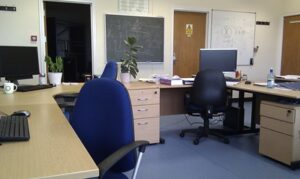At a recent Board Meeting, WCC Trustees accepted the proposed budget for the upcoming fiscal year. This year’s budget is somewhat smaller than previous years, due in part to the pandemic. Cutting the budget is never fun for anyone, but I can only describe as bizarre the Administration’s spending decisions.
Earlier this year, the WCC administration decided to close The Children’s Center, citing its high operating costs and low usage. The Children’s Center never made a profit, and probably hasn’t covered its operating costs at any point in its existence. The purpose of The Children’s Center was to offer low-cost childcare for parents who would otherwise not be able to attend classes at all.
Contrast this with the Health and Fitness Center, which must make a profit. The facility has spent much of 2021 either partially or completely closed. In addition, the HFC had lost two-thirds of its subscriber base during the pandemic. The money that the HFC should return to the General Fund has been zeroed out in the current fiscal year. Being closed for the last quarter of last year also generated a nearly $1M loss for the facility. To cover the building’s debts, WCC uses money from the General Fund. However, the high-cost, low usage rationale that sank The Children’s Center somehow does not apply to the Health and Fitness Center.
Worse, the HFC will cost the College additional millions of dollars in remaining bond payments through 2027. The facility itself is high-cost; it requires regular major system overhauls to remain competitive in the market. I have long heard reports of the shabby conditions inside the HFC, although these reports predate the extensive renovations the College must perform on the facility regularly.
Spending decisions on academics don’t line up with administrative spending
Last year, the Board of Trustees voted to cancel the culinary arts program at the request of the WCC administration. Again, the justification for the cuts came down to money. According to an interview about the decision in the Student Voice, Executive Vice President for Instruction Kim Hurns said:
“This was a program where the enrollment had been suffering for a while… we would have had to make new investments, so it really was not sensible for the college to do.”
For some reason, preserving the massive investment over the last 50 years in the culinary arts program doesn’t make sense. The message here, however, is that if an academic program costs money, the Administration will cut it.
Contrast that with the administrative spending decision to “invest” in new wireless IT infrastructure at a time when WCC needed the money, and no one was on campus to use the new network. Initially, the “investment” involved replacing end-of-life equipment. It then mushroomed into a $1.75M annual cost sink for “technology upgrades.” The message here is that the College is willing to invest whatever is necessary into the IT infrastructure but is not willing to invest money in academic programs.
No-bid contract defines administration’s spending priorities
In addition, the WCC administration concocted plans for a new website over a five-year period. The cost of building the website was enormous – far more than what WCC will own up to. Then just as the new site was ready to release, the WCC Administration threw the entire project away. This coincided with the termination of WCC’s entire in-house IT staff.
That decision cost WCC more than $5M per year for managed IT services. Because the WCC administration never sought competitive bids on the project, they (and we) have no idea whether this amount was negotiated. WCC could be (and likely is) paying a lot more for these services than necessary.
Once again, the message here is that controlling instructional costs is critical, but administrative costs get little to no oversight.
The WCC maintenance budget has been decimated. In FY 21, the WCC administration dedicated just $0.25 per square foot to taking care of the campus. That is well below the industry standard of $6.25 per square foot for commercial buildings. It explains the poor conditions of some campus buildings and spiraling rehabilitation costs for the Morris Lawrence Building.
The message here is that it’s ok to cut corners on maintenance and delay building rehab – even when it raises the cost of a project by $1M.
The real budget issue, which the WCC Trustees fail to address, is not decreasing revenue, but chronically poor spending decisions. Saving money is either an institution-wide priority, or it is not. If the WCC Trustees required its administrator to make higher quality spending decisions, WCC would not have to cut the maintenance budget, academic programs, or more cost-effective internal support resources like its in-house IT staff.
Photo Credit: Dorky Mum , via Flickr






































